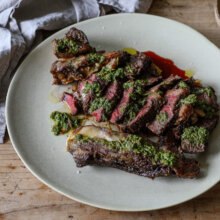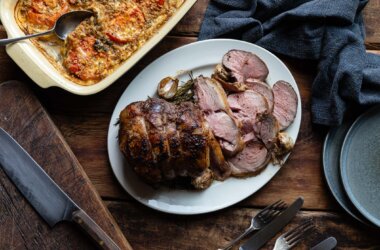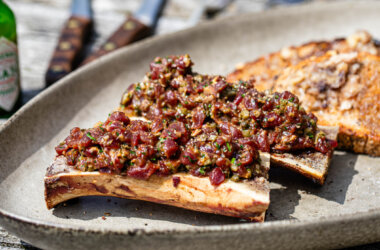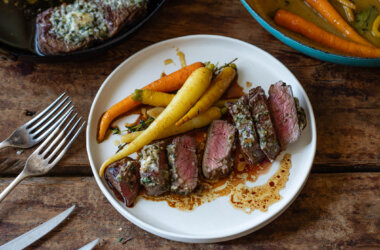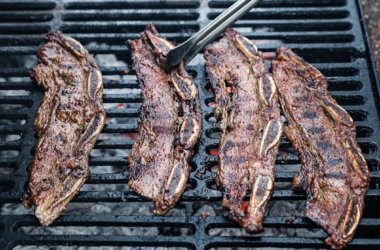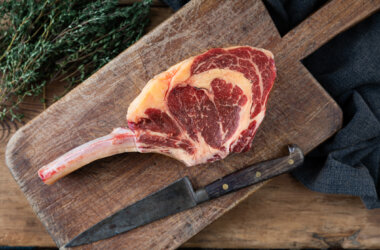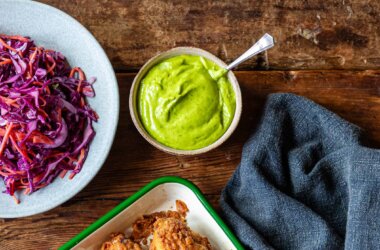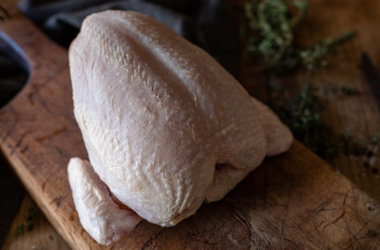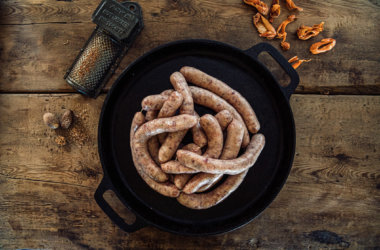Introducing a beef stock recipe by Lulu Cox, formerly of Rochelle Canteen in London. Rochelle Canteen, under the stewardship of Margot Henderson, wife of renowned chef Fergus Henderson, is a quaint whitewashed eatery nestled in an old school. With a menu that evolves daily to reflect the seasons, Rochelle Canteen embodies the essence of simplicity and quality ingredients.
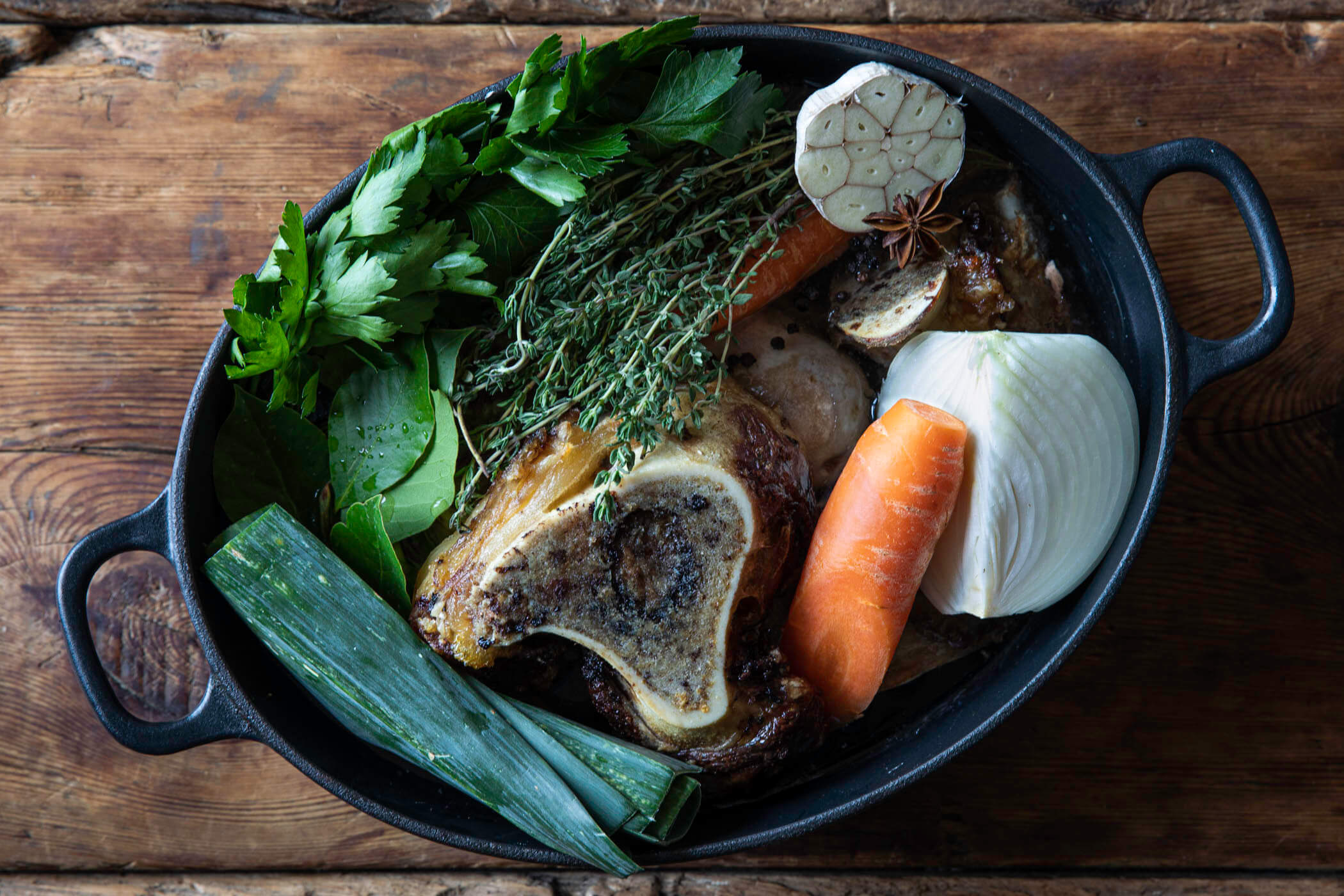
Ingredients
Method
-
Roast the Bones
Preheat your oven to 200°C. Place the beef bones into a large oven tray and roast for at least 30 minutes. Make sure the bones have space to brown evenly—don’t pile them up. Flip them halfway through to ensure a rich, golden colour. -
Prepare the Vegetables
While the bones are roasting, roughly chop your vegetables. These will form the base of your stock. -
Brown the Vegetables
Heat a large pot over high heat, add a scant tablespoon of olive oil, and toss in the vegetables. Cook for about 5 minutes, stirring occasionally, until they are golden. Avoid letting them sweat down; caramelisation is essential for flavour. -
Combine Bones and Deglaze
Transfer the roasted bones to the pot. Use a spatula to scrape up any caramelised bits from the roasting tray and add them as well—these are packed with flavour. -
Add Water and Aromatics
Add enough cold water to just cover the bones. Place your aromatics on top and gently bring the stock to a boil. Keep an eye on the pot and skim off any foam or scum that rises to the surface. Avoid stirring to keep the stock clear. -
Simmer the Stock
Reduce the heat to low and let the stock simmer gently for 4–6 hours. Look for a steady bubble every few seconds. -
Cool and Strain
Remove the pot from the heat and let the stock cool slightly. The meat on the bones should now be bland, indicating all the flavour has transferred to the stock. Strain the stock through a fine sieve into containers. -
Store the Stock
Let the stock cool completely before transferring it to airtight containers. Skim off any fat that has settled on the surface before use. -
Enjoy Your Beef Stock
Your beef stock is now ready to use in soups, stews, sauces, or gravies. If not used immediately, it can be stored in the fridge for up to one week or frozen for up to three months.
